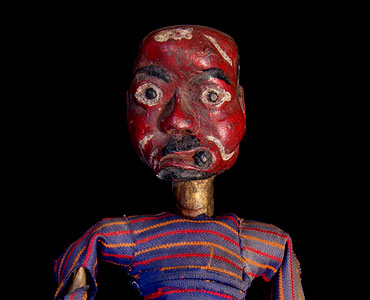Areca nut chewing is an ancient, but dying tradition widely practiced from South Asia to the Pacific islands and an inherent feature of social gatherings imbuing a spirit of friendship and conviviality. The areca nut is the seed of the areca palm and is often erroneously called betel nut because it is usually chewed wrapped in betel leaves. To prepare a chew, the nut is thinly sliced with a specially-designed nut cracker. A few pieces of nut are then wrapped in a betel leaf and mixed with lime and sometimes cloves, cardamon and tobacco. Chewing areca and betel gives the user a mild stimulative effect producing a sense of well-being, euphoria and heightened alertness. Regular chewing causes the lips and tongue to turn reddish-orange and some people believe that chewing the mixture reduces the incidence of cavities.
Many implements were made to beautify the ritual and evince the social status of the chewer. These objects range from elaborate areca nut cutters ("kacip"), to silver and gold containers ("cupu") to finely-made boxes ("tepak") made of rare woods or tortoise shell to store the implements. Artisans also made silver and gold containers specially designed for travelers and even small silver spittoons for courtly matrons to take with them on their journeys.
Many implements were made to beautify the ritual and evince the social status of the chewer. These objects range from elaborate areca nut cutters ("kacip"), to silver and gold containers ("cupu") to finely-made boxes ("tepak") made of rare woods or tortoise shell to store the implements. Artisans also made silver and gold containers specially designed for travelers and even small silver spittoons for courtly matrons to take with them on their journeys.
 |
Chewing betelnut Wayang Golek Central Java, early 20th C. |
